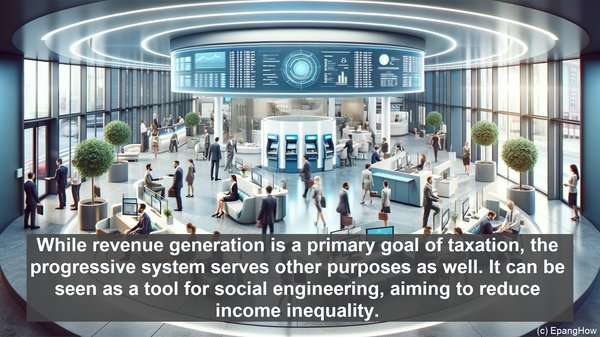Introduction: The Basics of Taxation
Hello everyone! Taxes are an integral part of our lives, contributing to the functioning of governments and the provision of public services. Today, we’re going to explore two prominent tax systems: the flat tax system and the progressive tax system. While both aim to generate revenue, they differ significantly in their approach and impact. Let’s dive in!
The Flat Tax System: A Simplistic Approach
The flat tax system, as the name suggests, applies a uniform tax rate to all income levels. In this system, everyone, regardless of their income, is subject to the same tax percentage. Proponents argue that this simplicity reduces administrative burden and promotes fairness, as everyone contributes proportionately. However, critics contend that it disproportionately affects low-income individuals, as a fixed percentage of their earnings may be a significant portion of their overall income.
The Progressive Tax System: Graduated Taxation
Contrasting the flat tax system, the progressive tax system employs a tiered approach. It consists of tax brackets, each with its own tax rate. As income increases, individuals move up the brackets, resulting in a higher tax rate for higher income levels. This system is rooted in the principle of ability to pay, aiming to distribute the tax burden more equitably. Advocates argue that it promotes income redistribution and social equity. However, opponents claim that it can discourage productivity and hinder economic growth, as higher earners face a greater tax burden.

Comparing the Impact: Who Benefits and Who Bears the Brunt?
When it comes to the impact on different income groups, the two systems diverge significantly. In a flat tax system, the tax burden is proportionate, meaning that individuals with higher incomes contribute more in absolute terms. However, in relative terms, low-income individuals may feel the pinch more, as the tax percentage remains constant. On the other hand, the progressive system places a higher burden on high-income individuals, as their tax rate increases with income. This can result in a more significant reduction in disposable income for the affluent.
The Role of Progressivity: Beyond Revenue Generation
While revenue generation is a primary goal of taxation, the progressive system serves other purposes as well. It can be seen as a tool for social engineering, aiming to reduce income inequality. By taxing higher earners more, it seeks to redistribute wealth and provide resources for social welfare programs. Additionally, the progressive system can act as an economic stabilizer during times of recession. By adjusting tax rates, governments can influence consumer spending and aggregate demand, potentially mitigating economic downturns.

